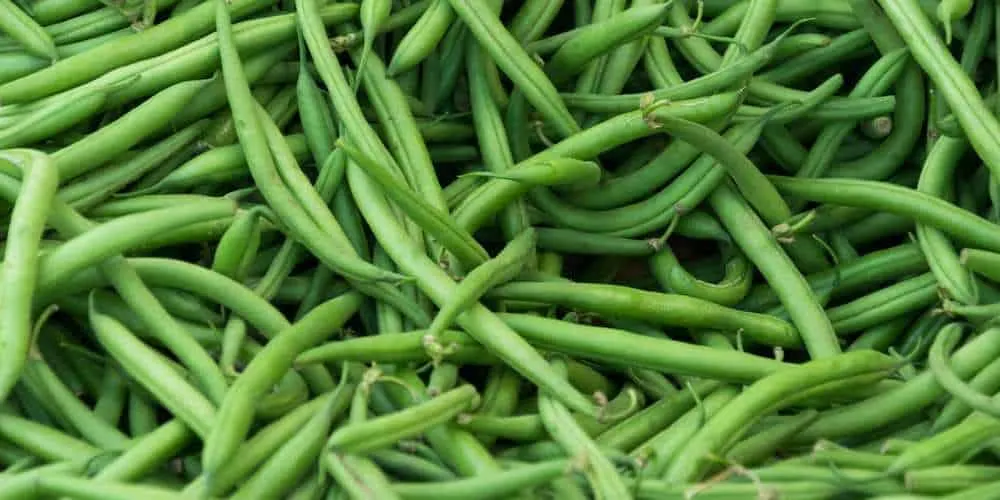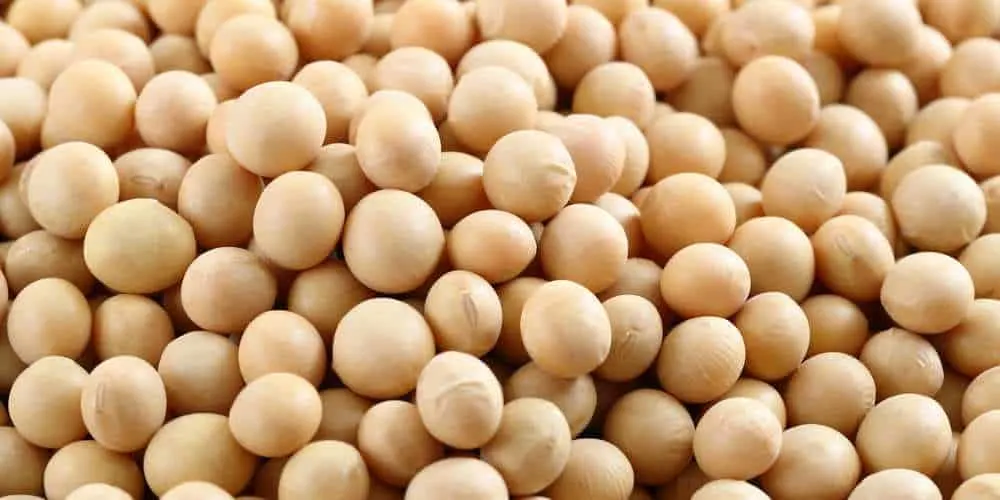You must have wondered if your bearded dragon could consume some foods that are not so common for that animal. Maybe it was even beans, but what kind is your beardie allowed?
When it comes to beans, there are several types. Therefore, when you ask yourself questions like:
Can bearded dragons eat beans? First, check the type. Fortunately, there are types that your beardie can eat, but there are also things you certainly didn’t know.
To find out what kind of beans you beardie are allowed to consume, keep reading!

Green Beans
Green beans, also known as string beans, are a very familiar addition to any dish. We eat them fresh, frozen, canned and even cooked. But how are things when it comes to us beardie?
Your beardie is allowed to eat green beans ONLY if they are fresh. Cooked, frozen, and canned beans are out of the question.
What are these veggies composed of?
| Fat | 0.2 gr |
| Sodium | 6 mg |
| Carbohydrate | 7 gr |
| Fiber | 2.7 gr |
| Sugar | 3.3 gr |
| Protein | 1.8 gr |
Green beans are a widespread vegetable that is best to plant during the spring. It grows quickly, and its fruits are nutritional and multipurpose. Both animals and humans are recommended to consume this little veggie.
Since we want to offer our beardie some healthy food, and green beans are of interest right now, the question follows:
How To Serve This Veggie To Our Beardie?
Unlike us, who eat these vegetables mostly cooked or frozen, different rules apply to our pets.
Serving green beans properly to our beardie means serving only fresh green beans, and here’s how to do it properly:
Let’s say you went to the market with the intention of buying green beans. When choosing, pay close attention to appearance. Your green beans should not have any black or brown spots on them. Also, they must not be cracked.
Since you have come home and want to serve this to your beardie, you must first thoroughly clean this vegetable. This means that you will peel them first, remove the whole shell and submerge the beans under running water.
Do not remove the beans from the water until they are well washed. During this cleaning, you should remove all possible dirt.
After that, it’s time to chop. Since some beans are a little bigger, your beardie may have difficulty chewing. Therefore, try to chop larger beans into small pieces.
Also, watch out for too small parts – they can be a possible trigger for choking.
After that, separate this into a portion with food and take it to your beardie.
NOTE: If this is the first time a beardie has eaten this vegetable, some experts advise you to be close until you finish your meal. (in case something goes wrong)
Before we get to the good sides of this vegetable, how much of this pet can we eat of this?
Bearded dragons already have a regular diet consisting of several things arranged according to health needs and age. For example, with young bearded dragons, the intake of fruits and vegetables should not be forced daily.
It would be best to consult a veterinarian and ask him for an accurate list when it comes to younger ones.
On the other hand, older bearded dragons should ingest this nutrient more often. The recommended dose for adult bearded dragons is a small serving (half of your hand) of green beans every few days.
Also, it would be even better if you served this alongside other veggies or pellets.
For a complete list of food, go to What Can Bearded Dragons Eat? 101 Food List
Now, it’s time to explain why this type of beans is good for your pet:
- Green beans are low in calories. One serving of 100 gr of green beans can contain a maximum of 31 calories, which is important for small-sized animals.
- Dietary fiber, which is found in green beans, serves as a protective vitamin. This type of fiber protects your beardie from other toxic substances and destroys possible cancer cells.
- Regular fiber is also good for lowering bad cholesterol. For example, if your beardie had a strong ingredient that might pose a problem for its health, you should give it some beans to lower the bad cholesterol levels in its organism.
- Green beans are rich in vitamin A, and by consuming them regularly, your beardie is protected from possible chronic diseases. This vitamin also works as an antioxidant and boosts your beardie’s immune system during the winter.
- Zea-xanthin is a very important vitamin found in green beans. This is especially beneficial for your beardie because it protects their skin from harmful UV lighting, and your beardie spends a considerable amount of time under such light.
- Another essential vitamin is vitamin B. This is one of the crucial vitamins that should be included in your beardie’s diet since it protects your pet from infections. Vitamin B is also good for preserving your beardie’s sight.
- Magnesium, iron, calcium are all contained in green beans. Alongside vitamins A and B, they are the critical factor in the proper functioning of your beardie’s metabolism.
- Green beans are best known for their vitamin K. This is the vitamin that protects the bones, and small-sized and fragile animals like bearded dragons need to consume this.
- The biggest advantage of this vegetable is that it is easily digestible. If your beardie has been experiencing some stomach problems, you are recommended to give it some green beans to promote proper digestion.
Next up is the shelf-life. How long can these green beans stay in your kitchen?
These veggies are not known for their long shelf-life, so it would be best if you put them to use as soon as possible.
Both fresh and cooked greens can last from 5 to 7 days in your kitchen. Some people that want to preserve their cooked green beans tend to store them in plastic bags. Don’t keep them like this for more than 10 days in your kitchen.

Soybeans
Unlike green beans, which are highly nutritious, soybeans should not be fed to your beardie. The main reason for this is their disproportionate nutritional value. Let’s take a look.
| Calories | 173 |
| Water | 63% |
| Protein | 16.6 gr |
| Carbs | 9.9 gr |
| Sugar | 3 gr |
| Fiber | 6 gr |
As you can see, soybeans contain many calories, which makes them undesirable among bearded dragons. However, this is not their biggest disadvantage.
Your bearded dragons shouldn’t consume soybeans anytime soon because of their incredibly high phosphorus level. Consequently, large amounts of phosphorus can disrupt the calcium balance in your beardie’s organism.
Another thing this vegetable is known for is containing phytic acid. This acid disrupts the levels of vitamins like zinc and iron.
To put it plainly – soybeans are too strong for your beardie, so don’t rely on this vegetable.
Soybeans are very popular in America. They are the second most common crop, next to corn. Americans grow this bean throughout the entire year and make great money from it.
Still, this doesn’t make it suitable for small-sized pets like your bearded dragon.
It’s not the end of the world if your beardie tries this vegetable once in a while, but you should be cautious enough not to include it in their meals by yourself.
If your beardie has had too many soybeans, it will probably experience some of the following side effects:
- Allergy to soybeans – your beardie can become allergic and express the allergic reaction through inflammation of the skin’s surface.
- Diarrhea – too much toxic or strong nutrients in your beardie’s organism might lead to stomach problems like diarrhea or bloating.
- Suppression – this happens when the amounts of toxic ingredients from soybeans disrupt the functioning of your beardie’s system and lower its energy levels.

What About Peas?
Before we uncover whether this is a safe veggie for your bearded dragon, you might notice that peas look a lot like green beans at first glance. It’s true – they look alike, and people tend to mistake them for one another quite often.
The most obvious difference between these two is stems. While peas have hollowed, beans have a more solid stem. Also, beans lack the twined tendrils that peas have.
That said, it’s time to give a definite answer. YES, your beardie is allowed to have peas. But not just because they are similar to green beans.
Here’s the nutritional value for 80 gr of peas.
| Calories | 63 |
| Fat | 0.2 gr |
| Sodium | 58 mg |
| Carbs | 11 gr |
| Fiber | 3.6 gr |
| Sugar | 3.5 gr |
| Protein | 4.1 gr |
This veggie also contains some solid health benefits. Let’s get right to list them down.
Bearded dragons are not allowed much fat, and peas contain almost none – which is terrific!
Peas contain vitamins A, C, and K – boosting the immune system, maintaining good vision and bone development and density.
The only danger of this vegetable is the same as with soybeans – high amounts of phosphorus. However, the levels of phosphorus are considerably lower in peas than in soybeans.
You’re safer with this vegetable, but still, don’t give your beardie too much of it.
There are 3 types of peas you can come across:
- Garden sweet peas
- Snow peas
- Sugar snap peas
While snow and sugar snap peas are safe for bearded dragons, sweet garden peas are toxic, and it would be best to avoid this type completely.
With feeding this type of food to your beardie, you should be careful not to overdo it. It would be best if you gave your beardie some peas in a pot no more than once a week. That would be more than enough according to their dietary requirements.
Before serving them, be sure to wash and chop them well!

